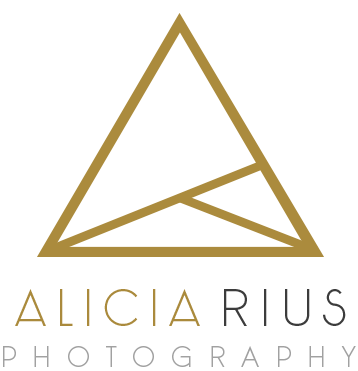Lighting is a fundamental aspect of photography that can make or break a shot. Understanding the different light sources available and how to use them effectively is crucial for any photographer, whether you're a beginner or a seasoned professional. This article will delve into various light sources for photography, highlighting their characteristics, advantages, and how to incorporate them into your shoots for stunning results.
Natural Light
Natural light is often considered the most beautiful and versatile light source for photography. It varies greatly depending on the time of day, weather conditions, and location, offering a wide range of lighting effects that can enhance your photos.
Photo by @tcraye
Benefits of Natural Light
Soft and Diffused: Natural light, especially during the golden hours (shortly after sunrise and before sunset), is soft and diffused, creating flattering and warm tones in portraits.
Cost-Effective: Utilizing natural light is free and doesn't require any additional equipment, making it accessible for all photographers.
Versatile: From harsh midday sun to the soft light of overcast days, natural light can be manipulated using reflectors and diffusers to achieve the desired effect.
Challenges with Natural Light
While natural light is highly praised, it also comes with its challenges. The intensity and quality of natural light can change rapidly, requiring photographers to adapt quickly. Additionally, relying solely on natural light can limit shooting opportunities, especially in low-light conditions or at night.
Studio Lighting
Studio lighting offers complete control over the lighting environment, making it an essential tool for professional photographers. Studio lights come in various forms, including continuous lights, strobes, and softboxes, each providing different effects and flexibility.
Photo by @doscocoslocos
Continuous Lights
Continuous lights are always on, providing a constant light source. This makes them ideal for beginners as what you see is what you get, allowing for easier adjustments before taking a shot.
Strobes
Strobe lights, or flash units, emit a brief but intense burst of light. They are powerful and can freeze motion, making them ideal for capturing fast-moving subjects. However, they require a bit more experience to master due to their short duration and need for precise timing.
Softboxes and Diffusers
Softboxes and diffusers are used to soften the light from strobes and continuous lights, creating a more even and flattering illumination. They help reduce harsh shadows and are particularly useful for portrait photography.
Speedlights
Speedlights, or external flash units, are portable and versatile light sources that can be attached to your camera or used off-camera. They are a favorite among event photographers due to their compact size and powerful output.
Advantages of Speedlights
Portability: Speedlights are small and lightweight, making them easy to carry and set up on location.
Flexibility: They can be used on-camera for fill light or off-camera to create more dynamic lighting setups.
Control: Many speedlights offer adjustable power settings and the ability to tilt and rotate the head, allowing for creative light shaping.
Using Speedlights Effectively
To get the most out of your speedlights, consider using modifiers like diffusers, bounce cards, and gels. These accessories can help soften the light, control its direction, and add color to your shots, enhancing your creative possibilities.
Reflectors
Reflectors are simple yet powerful tools for manipulating light. They don't generate light themselves but instead bounce existing light onto your subject, filling in shadows and creating a more balanced exposure.
Types of Reflectors
Reflectors come in various shapes, sizes, and colors, each serving a different purpose:
Silver Reflectors: Provide a bright, neutral light, enhancing highlights and creating contrast.
Gold Reflectors: Add a warm, golden tone to your images, perfect for creating a sunlit effect.
White Reflectors: Produce soft, natural light that is ideal for filling in shadows without altering the color balance.
Black Reflectors: Used to block light or create shadows, adding depth and dimension to your photos.
Incorporating Reflectors
Reflectors are incredibly versatile and can be used in various lighting situations. Whether you're shooting outdoors with natural light or indoors with studio lighting, reflectors can help control and enhance the light, giving you more creative control over your images.
Practical Applications and Creative Uses
Understanding how to use different light sources effectively can open up new creative possibilities in your photography. Here are some practical applications and creative uses to consider:
Combining Light Sources
Combining natural light with artificial light sources, such as speedlights or continuous lights, can create interesting effects. For example, using natural light as the main source and a speedlight for fill light can add dimension and balance to your images.
Creating Mood with Neon Signs
Neon signs can serve as a unique and vibrant light source for creative photography. The colorful glow from neon signs can add an edgy and urban feel to your shots. They are especially effective in low-light settings, providing both illumination and a striking visual element.
Using Shadows Creatively
Shadows are not just something to avoid; they can be used creatively to add drama and depth to your photos. Experiment with different light sources and angles to create interesting shadow patterns and silhouettes.
Light Painting
Light painting involves using a slow shutter speed and a moving light source to "paint" light into the scene. This technique can produce stunning and surreal images, perfect for adding a creative touch to your portfolio.
Conclusion
Lighting is an essential component of photography that can significantly impact the quality and mood of your images. By understanding and mastering different light sources—natural light, studio lighting, speedlights, reflectors, and creative elements like neon signs—you can enhance your photography skills and expand your creative horizons. Experimenting with various light sources and techniques will not only improve your technical abilities but also help you develop a unique photographic style. So, grab your camera, explore the possibilities, and let the light guide your creativity.



